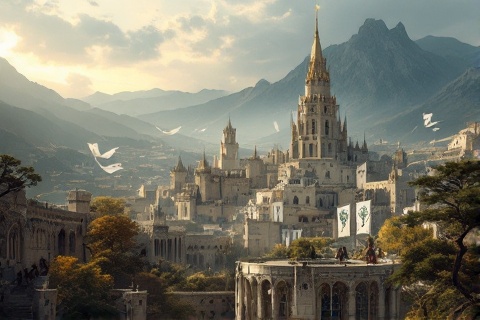
Gondor: The Last Bastion of Men
From Númenórean Legacy to the White City's Glory
The Foundation of a Great Realm
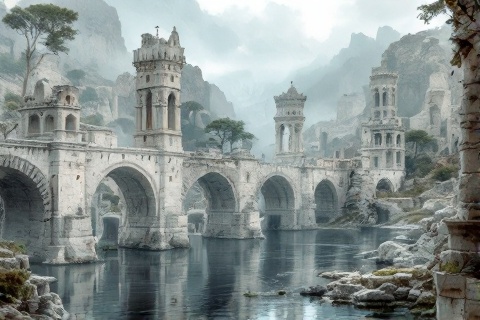
Following the catastrophic downfall of Númenor in S.A. 3319,
Elendil and his sons established the realm of Gondor in
Middle-earth as a kingdom in exile. While Elendil took
the northern realm of Arnor, Isildur and Anárion jointly ruled
Gondor, creating a powerful society that preserved
Númenórean culture, knowledge, and traditions in the South.
The founders of Gondor displayed remarkable strategic wisdom in choosing their
realm's location, positioning it between the natural fortifications of the White
Mountains and the life-giving waters of the Anduin River. This position gave
them control over the fertile valleys, important trade routes, and provided
natural defenses against potential enemies from both north and south.
The kingdom's original seat of power was established in Osgiliath, a magnificent
city straddling the Anduin River, while Minas Anor was built into the eastern
face of Mount Mindolluin as a fortress-city. Osgiliath, with its great stone
bridge and dome of stars, served as the kingdom's cultural and political heart,
while Minas Anor provided additional security and commanded the passes of the
White Mountains.
Minas Tirith: The White City
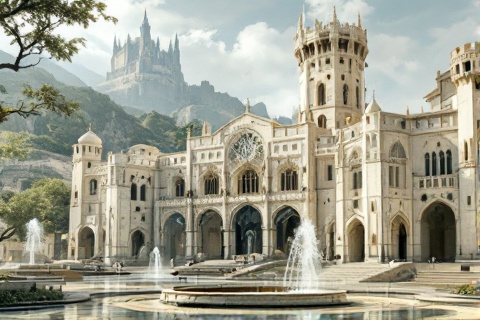
Minas Tirith, originally named Minas Anor, was constructed as an architectural
marvel with seven distinct levels, each rising one hundred feet above the other
and protected by its own great wall. Each level was accessed through a tunnel
cut through the rock of Mount Mindolluin, with the main gates of each level set
at alternating sides of the city, creating a zigzagging path to the summit.
The Great Gate of Minas Tirith stood as a testament to Gondorian craftsmanship
and power, forged of steel and iron with intricate designs and reinforcements.
Before its destruction during the War of the Ring, it had never been breached,
with its immense doors opened only for the Lord of the City and distinguished
guests.
At the city's pinnacle stood the majestic Tower of Ecthelion, rising from the
Citadel like a spike of pearl and silver. This tower, reaching nearly three
hundred feet above the seventh level, housed the throne room of the kings and
later the Stewards of Gondor, serving as both a defensive watchtower and a
symbol of Gondorian authority.
The Court of the Fountain lay before the Tower of Ecthelion, featuring the
White Tree, the living symbol of Gondor's
royalty and its connection to Númenor and ultimately to the Blessed Realm. The
fountain's waters sparkled in the sunlight, while the Court served as a place of
ceremony and contemplation for Gondor's rulers.
The Great Fortresses
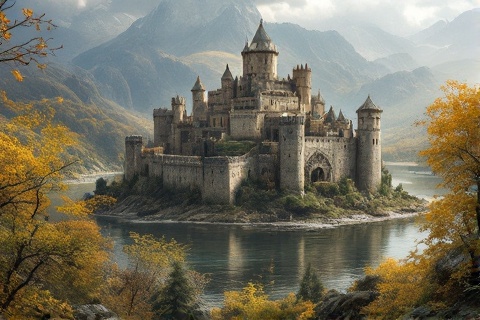
Minas Ithil, the Tower of the Rising Moon, was built as
Isildur's city in the eastern valleys of the Ephel Dúath. Though it fell to the
Nazgûl in T.A. 2002 and became the dread fortress of Minas
Morgul, it originally served as a beautiful guardian city,
with marble walls that gleamed in the moonlight and protected Gondor from
threats from Mordor.
The fortress of Cair Andros, situated on a large island in the Anduin River,
served as a crucial defensive position controlling river traffic and protecting
Gondor's northern approaches. Its garrison maintained vigilance over the eastern
shores and prevented enemy forces from crossing the river to threaten Anórien.
Hidden behind a curtain of falling water in Ithilien, Henneth Annûn served as a
secret refuge for Gondor's Rangers. This concealed outpost allowed Gondorian
forces to monitor enemy movements in Ithilien and maintain a presence in these
contested lands even after much of the region fell under the
Shadow's influence.
Ithilien: The Garden of Gondor

Ithilien, often called the Garden of Gondor, featured lush woods and flowering
valleys that showcased the region's natural beauty. The landscape was dotted
with sweet-smelling herbs and flowers, while streams descended from the Ephel
Dúath through quiet glades and sunny openings.
Throughout Ithilien, travelers could find the remnants of once-proud Gondorian
settlements and the ancient roads that connected them. These paths, though worn
by time, still bore the skilled stonework of Númenórean craft, with occasional
way-markers and milestones bearing the faded emblems of Gondor.
Among the ruins of Ithilien's former glory, nature had reclaimed its domain with
remarkable vigor. Fragrant herbs like athelas, thyme, and sage grew wild among
fallen stones, while white and yellow flowers bloomed in abundance between the
remnants of old courtyards and gardens, creating a bittersweet testament to the
region's former grandeur.
The Pelennor Fields
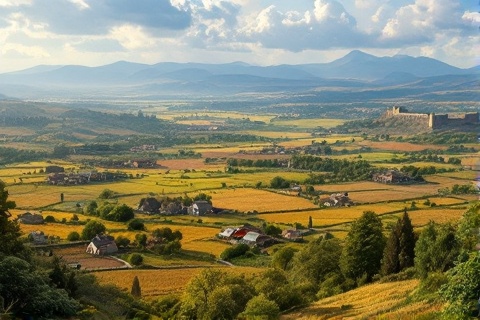
The Pelennor Fields surrounding Minas Tirith consisted of rich farmlands that
provided sustenance for the city's population. These fertile plains supported
orchards, grain fields, and pastures, while small streams flowing from the White
Mountains irrigated the countryside and sustained numerous farming communities.
The Rammas Echor, a great wall extending up to thirty miles from the city,
enclosed the Pelennor Fields in a vast circle. This defensive structure, though
not as mighty as the walls of Minas Tirith itself, provided an important first
line of defense against attackers and helped protect the valuable farmlands
within.
Within the protection of the Rammas Echor lay numerous settlements, homesteads,
and orchards that formed the townlands of Minas Tirith. These communities
supplied the city with fresh produce, maintained the agricultural lands, and
provided a peaceful countryside setting that contrasted with the formal grandeur
of the White City.
The Ports and Coastlands
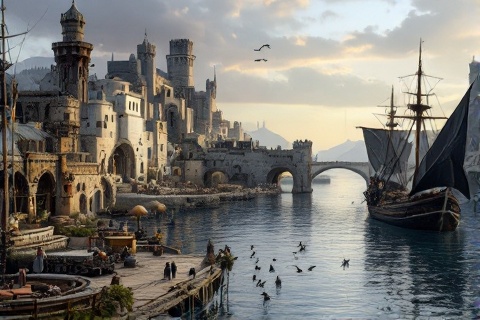
Pelargir, the oldest city in Gondor and its principal harbor, stood proudly
where the River Anduin met the Sea. Founded by Númenórean sailors before the
fall of their island homeland, it remained a crucial port throughout the Third
Age, maintaining Gondor's naval power and maritime trade routes.
Along the shores of Belfalas, numerous fishing villages and port towns dotted
the coastline, their inhabitants skilled in seamanship and maintaining the
maritime traditions of their Númenórean ancestors. These settlements formed
vital links in Gondor's coastal defense network and contributed to the realm's
maritime economy.
The magnificent port city of Dol Amroth, seated upon cliffs overlooking the Bay
of Belfalas, stood as a beacon of Gondorian nobility and power. Ruled by a line
of princes claiming Elvish ancestry, the city combined the best of Gondorian
architecture with naval capability, hosting a powerful fleet that helped protect
Gondor's southern coasts from Corsair raids.
